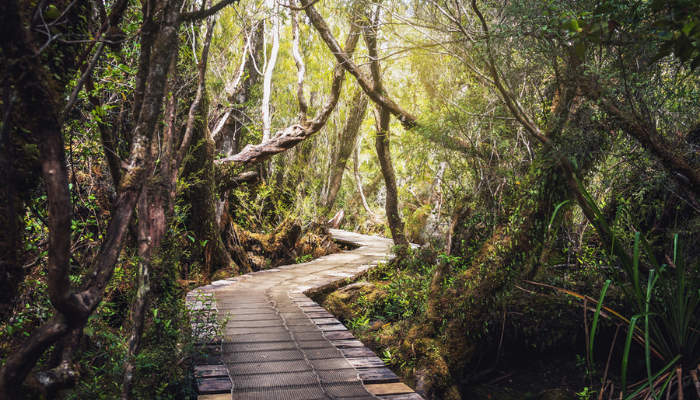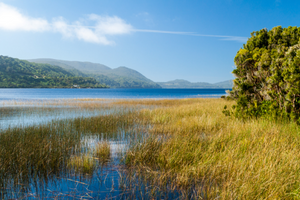
Chiloé National Park is located in the west of the island, at about the same altitude as the capital Castro. The first and most used entrance to the national park is at the Pacific Ocean near the village of Cucao. This is also where the long beach Bahia Cucao is located. At the southern end of the bay, at the tip of Pirulil, you can admire the dock Muelle de las Almas, a work of art inspired by the legend of the Souls of Cucao.

The largest area of the park consists of the hills of the Cordillera de la Costa, known in this area as the Cordillera del Piuchén.
The protected areas are dunes, Valdivian forests, larch forests and peat bogs. More than 100 different animal species live in the park and penguins can be seen on the coasts.
Chiloé National Park is rich in cultural heritage with historical, ethnographic, archaeological and also interesting palaeontological sites such as at Rahue beach.
Near the park, there are still two Huilliche settlements (Huentemo and Chanquín) that keep their traditions alive and where visitors can learn about and appreciate the heritage and cultural assets of this indigenous people. These communities are integrated into the development of the park.
Due to the rainy and changeable weather on Chiloé, the best time to visit the park is between September and March.
For more information about excursions to Chiloé National Park
please send an e-mail to info@travelart.com.

